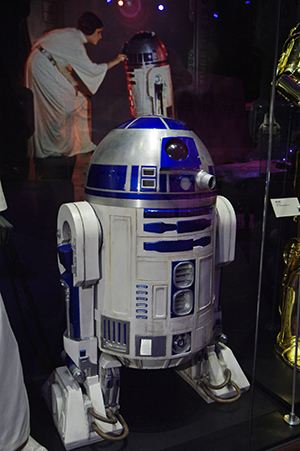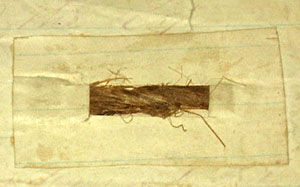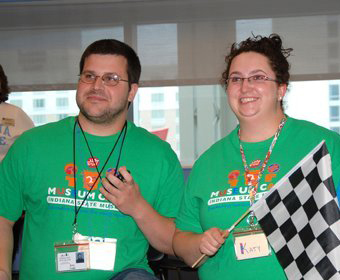by Damon Lowe, Chief Curator of Science & Technology and Curator of Biology
 To many people, the term “droid” conjures up one of two images: a sleek new smart phone, or a somewhat annoying, but equally endearing protocol robot that is “fluent in over six million forms of communication.” It is the second one that is the most fascinating because the reality of these types of robots isn’t as far away as we might think. Sure, we don’t have C-3PO or other “droids” acting as ambassadors and diplomats like they do in the Star Wars® movies, but we are moving much closer to that reality.
To many people, the term “droid” conjures up one of two images: a sleek new smart phone, or a somewhat annoying, but equally endearing protocol robot that is “fluent in over six million forms of communication.” It is the second one that is the most fascinating because the reality of these types of robots isn’t as far away as we might think. Sure, we don’t have C-3PO or other “droids” acting as ambassadors and diplomats like they do in the Star Wars® movies, but we are moving much closer to that reality.
The Star Wars saga shows droids performing many different tasks, from repairing Luke’s injured hand, to fixing vehicles and even fighting battles. It may not come as a surprise that contemporary robots can do most of these things too, but the level of sophistication they are achieving makes them seem like they would be right at home in the Star Wars universe. There are many different types of robots in the real world, and they don’t all fit the definition of droid, which is “a mobile robot usually with a human form.” Human-controlled surgical robots have been around for a couple of decades, but these are merely extensions of the surgeon’s arms, just like the welding robots used for industry are replacements for part of a human’s functionality, not the entire being.
 It really gets interesting with the newest advances, where the droids start looking like they stepped right out of the Star Wars universe. One of these robots, Honda’s ASIMO, is humanoid in appearance and movement, and even has some form of artificial intelligence that allows it to assist people who lack full mobility. ASIMO can run, open screw top containers, pour juice, recognize people and even stand on one leg! Another human-like robot is Boston Dynamics PETMAN, which is being developed to test chemical protection suits for the military. Like the Star Wars droids, these real world robots don’t have unlimited power supplies, and they need wires or battery packs that require frequent recharging. While technology hasn’t quite caught up to the Star Wars universe, we aren’t light years away either. Visit the Indiana State Museum to check out the Star Wars: Where Science Meets Imagination and learn about droids and other out-of-this-world technologies!
It really gets interesting with the newest advances, where the droids start looking like they stepped right out of the Star Wars universe. One of these robots, Honda’s ASIMO, is humanoid in appearance and movement, and even has some form of artificial intelligence that allows it to assist people who lack full mobility. ASIMO can run, open screw top containers, pour juice, recognize people and even stand on one leg! Another human-like robot is Boston Dynamics PETMAN, which is being developed to test chemical protection suits for the military. Like the Star Wars droids, these real world robots don’t have unlimited power supplies, and they need wires or battery packs that require frequent recharging. While technology hasn’t quite caught up to the Star Wars universe, we aren’t light years away either. Visit the Indiana State Museum to check out the Star Wars: Where Science Meets Imagination and learn about droids and other out-of-this-world technologies!
Star Wars: Where Science Meets Imagination, presented by Bose Corporation®, was developed by the Museum of Science, Boston, and Lucasfilm Ltd. Star Wars objects in this exhibition are on loan from the Lucas Cultural Arts Museum.
TM & ©2013 Lucasfilm Ltd. All rights reserved. Used under authorization.
This material is based upon work supported by a grant from the National Science Foundation under Grant No. 0307875.
Local Sponsor: McDonalds of Central Indiana
With additional local support from WISH-TV8 and Hamilton Exhibits
Filed under: museums, science, technology | Tagged: ASIMO, droids, PETMAN, robots, Star Wars | 3 Comments »










